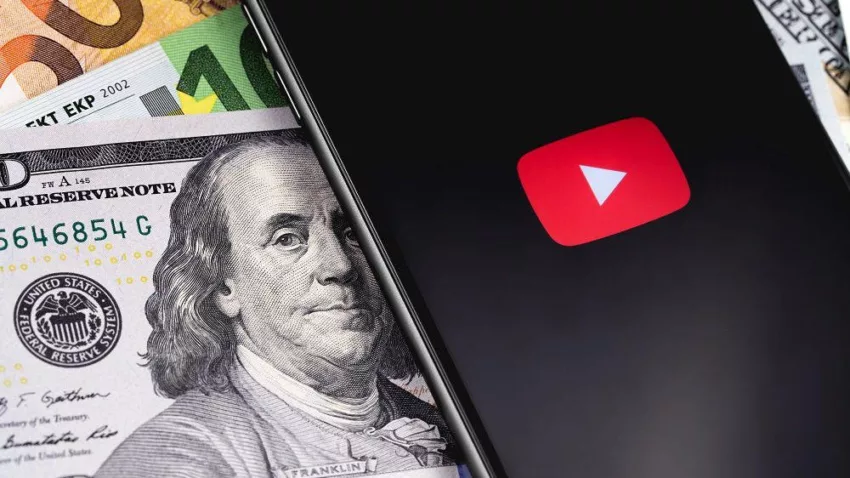YouTube pay-per-view is a method of monetizing your YouTube content by charging your viewers to access your videos. Unlike ad revenue, where you earn money based on the number of views and clicks on ads, pay-per-view revenue is directly proportional to the number of people who pay to view your content.
YouTube pay-per-view works on the principle of microtransactions, where viewers pay a small fee to watch a video or a series of videos. This fee can range from a few cents to a few dollars, depending on the type of content and the audience’s willingness to pay.
Table of Contents
What is YouTube Pay Per View Monetization Model?
YouTube Pay Per View (PPV) is a monetization model that allows creators to earn revenue by charging viewers to access their content. With this model, creators can set a price for their videos, and viewers must pay a fee to watch the content.
Here’s an overview of how YouTube PPV works:
Setting up PPV
To enable PPV on their channel, creators must first meet certain eligibility requirements. They must have at least 1,000 subscribers and be a member of the YouTube Partner Program. Once eligible, creators can set up PPV for their individual videos.
Setting a price
Creators can set their own price for their PPV content, which can range from a few cents to several dollars. YouTube takes a percentage of the revenue generated from PPV sales.
Viewing the content
When viewers come across a PPV video, they will be prompted to pay the fee to watch the content. Once they have paid, they can watch the video as many times as they like.
Revenue sharing
YouTube takes a percentage of the revenue generated from PPV sales, but the exact percentage varies depending on the country and currency used for the transaction. Creators receive the rest of the revenue.
Reporting and analytics
YouTube provides creators with detailed reporting and analytics on their PPV content. This includes data on the number of views, revenue generated, and other metrics.
YouTube Pay-Per-View vs. Ad Revenue
YouTube Pay Per View (PPV) and ad revenue are two different monetization models on YouTube, and each has its own advantages and disadvantages.
PPV allows creators to charge viewers a fee to access their content, whereas ad revenue allows creators to earn money through advertising that is displayed on their videos. The key difference between the two models is that with PPV, creators have more control over their revenue and can set their own prices for their content, whereas ad revenue is determined by the number of views and clicks on the ads.
PPV can be a good option for creators who produce high-quality, exclusive content that their audience is willing to pay for. However, it may not be a reliable source of income, as viewers may not be willing to pay for every piece of content.
Ad revenue, on the other hand, is a more consistent source of income, as long as creators are able to generate enough views and clicks on their videos. However, the revenue generated from ads can fluctuate depending on factors such as ad formats, audience demographics, and advertiser demand.
The Future of YouTube Pay Per View
The future of YouTube Pay Per View (PPV) is uncertain, as it has not been widely adopted by creators and viewers compared to other monetization models such as advertising and merchandise sales. However, PPV has the potential to become a more popular monetization model in the future as creators continue to look for new ways to monetize their content and offer unique experiences to their audience.
One potential area where PPV could see growth is in the realm of live-streaming events, such as concerts, sporting events, and other performances. With the rise of virtual events, PPV could offer a way for creators to earn revenue from exclusive live streams that viewers are willing to pay for.
Another area where PPV could see growth is in niche markets, where creators produce highly specialized or exclusive content that appeals to a small but dedicated audience. These creators may be able to generate more revenue through PPV than through advertising or other monetization models.
Pros and Cons of YouTube Pay Per View
Here are some of the pros and cons of YouTube Pay Per View (PPV) as a monetization model:
Pros:
More control over revenue: With PPV, creators have more control over the price of their content, which can lead to a more consistent and predictable revenue stream.
Exclusive content: PPV allows creators to offer exclusive content to their most dedicated fans, which can help build a loyal audience and increase revenue.
High-quality content: PPV can be a good option for creators who produce high-quality, premium content that they believe viewers would be willing to pay for.
Additional revenue stream: PPV can provide an additional source of revenue for creators, in addition to advertising, sponsorships, and other monetization models.
Cons:
Limited audience: PPV may not be a viable option for creators with a smaller or less dedicated audience, as viewers may not be willing to pay for every piece of content.
Competition: PPV faces competition from other platforms and services that offer similar content for free or at a lower cost.
Viewer expectations: Viewers on YouTube may have certain expectations around free content, and may be resistant to paying for content on the platform.
Revenue sharing: YouTube takes a percentage of the revenue generated from PPV sales, which can reduce the amount of money that creators earn from the model.
How to Set up the Right Price for Your YouTube Pay-Per-View Videos?
Setting the right price for your YouTube Pay-Per-View (PPV) videos can be a challenging task. Here are some tips on how to set the right price for your PPV videos:
1. Research the market
Research what other creators are charging for similar content to yours. Look at the price points that have been successful and analyze the audience and content similarities to yours.
2. Analyze your content value
Look at your content and determine its value to your audience. Is it exclusive or hard to find? Is it high quality or valuable to their lives? Is it worth the price you’re asking?
3. Consider your audience’s purchasing power
Consider your audience and how much they are willing to pay for your content. If your content is niche, exclusive, or in high demand, they might be willing to pay more. If your audience has limited purchasing power, you should consider a lower price point.
4. Offer promotions and discounts
Offering promotions and discounts can help increase the likelihood of viewers purchasing your content. You could offer a discount for a limited time or give loyal viewers a reward for their support.
5. Test your pricing
If you are unsure about your pricing, you can test different price points to see what works best for your content and audience.
6. Analyze the performance
Once you’ve set the price for your PPV content, track the performance of your videos to see how they are performing. This can help you determine if the price point is working or if it needs to be adjusted.
- What is Epic Games Launcher and How to Install It? - July 15, 2024
- What Is Audius Music Streaming App and How Does it Work? - July 13, 2024
- The 10 Best Astronomy Apps for Stargazing - July 12, 2024





